Many businesses rely on a single factor to authenticate users connecting to their systems. When you rely on only usernames and passwords, you make it far easier for hackers to break into sensitive resources. At the beginning of 2019, a cybercriminal put together a massive database of usernames and passwords. They’re distributing 2.2 billion records for free, which creates a dangerous cybersecurity environment. Multi-factor authentication is one way to combat this leak.
What is Multi-factor Authentication
Multi-factor authentication uses more than one factor to ensure that the party attempting to access your systems is authorized to do so. Cybersecurity best practices involve authentication methods that fall under different categories. The username and password, for example, is something that your employee knows. No one else should have that information. Other groups include possession, which includes USB keys and other types of authenticators, and inherence, which covers biometrics.
A hacker has a more difficult time gaining access to multiple factors. They may not know what they’re looking for or how to spoof this data. If employees use physical hardware as part of the authentication process, the cybercriminal may have to gain access to that device.
Some people are prone to using the same usernames and passwords for all of their accounts. While a strong password policy can limit their opportunities to do so, it doesn’t remove all of the danger associated with relying on a single authentication factor. Multi-factor authentication makes your workplace more secure through additional login steps.

Office Applications with Multi-factor Authentication
Many applications have multi-factor authentication support built-in. Office 365 and GSuite are two prominent platforms that utilize two-factor authentication. You can start implementing this cybersecurity measure in your organization quickly when your current solutions support it. Enterprise resource planning platforms such as SAP also have this functionality included.
Managing Multi-factor Authentication
If your applications don’t have multi-factor authentication available, you can deploy other solutions to help you manage this process. Last Pass is a password manager with multi-factor authentication. It can generate passwords for your organization and protect them from data breaches.
IDaptive Next-Gen Access is an enterprise-level multi-factor authentication tool that protects complex infrastructure that must deal with many in-house applications and cloud-based resources. AuthPoint Multi-factor Authentication offers a smaller scale solution that uses smartphones as an authorization factor. Azure Multi-Factor Authentication is particularly handy if you use this platform for your application development. It’s designed for companies that have internal and external parties that require access to systems.
The Benefits of Working with a Managed IT Service Provider in Florida
Multi-factor authentication takes significant resources to implement in your organization. When your in-house IT staff is already busy working on other projects, or doesn’t have a background in this technology, it takes a long time to put it into place. You’re vulnerable to attacks using a single factor login during this period.
A managed IT service provider in Florida, such as ITS Group, helps you implement multi-factor authentication as a comprehensive network security strategy. This measure is one piece of the network security whole, but it’s a critical one in the light of that login database getting passed around. Improving your defensive measures to proactively stop hackers from leveraging that data reduces the opportunities they have to steal data and bring down your network.
